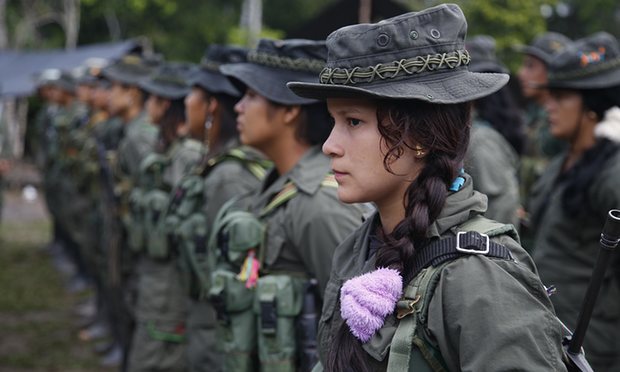The Western Hemisphere has reason to celebrate… The Revolutionary Armed Forces of Columbia finally agreed to end the longest running armed conflict of the Americas. Colombia’s Marxist FARC (“Fuerzas Armadas Revolucionarias de Colombia”) rebel group began as a peasant uprising against the national government in 1964. The group’s ideologies encompass Marxism, the antithesis of capitalism, and advocates for values such as “from each according to his ability, to each according to his needs.” Colombia’s President, Juan Manuel Santos, has been in negotiations with the group for the past four years. Although the peace accord has Santos’ blessing and FARC’s acquiescence, the Columbian nation will keep its fingers crossed that voters approve the deal in a national referendum.
The peace agreement will wrap up over a half a century of conflict, close to a quarter of a million deaths, and over 5 million internally displaced persons (IDPs) in the ravaged nation. (Some estimates of the FARC conflict even have the number of IDPs in Colombia upwards of 8 million.) The controversial peace pact will grant rebel combatants amnesty for any and all crimes committed during conflict. This reality is painful for many in the country who’ve witnessed FARC forces thrive though kidnapping, extortion, and involvement in illicit drug trade. Additionally, the accord will allow rebel forces to form a political party and seek political office.
The deal will also have a profound impact on Columbia’s illegal narcotics industry as it requires farmers to destroy coca plants- the source of cocaine manufacturing. This land will then be redistributed to former FARC rebels and facilitate new crop industries directed towards job creation on their behalf. As FARC forces step down from cocaine trading, an event anticipated with both optimism and skepticism, this begs the question of who may be waiting in the wings of the jungle to claim control of the lucrative drug crop which supplies about 60 percent of the world’s cocaine. After all, these billions of acres of emerald green coca crops have brought in $2.4B – $3.5B annually for the FARC organization, and that is not an effortless surrender.
Arguably its greatest accomplishment, the peace agreement calls for the release of child soldiers. The first group of minor ex-militants was released to the Red Cross this past week, with FARC leaders stating “We the FARC believe that the outing of minors from war zones is only the first step towards a better future for new generations.” The Colombian army estimates that roughly half of its soldiers became FARC combatants as children. This relentless recruitment of children over the past fifty-plus years constitutes egregious abuse to the minors’ innocence, in violation of several human rights conventions, and is recognized as a war crime under the Rome Statute of the International Criminal Court. In 2000, the world’s first international treaty focused on ending the military exploitation of minors came into being- OPAC, the Optional Protocol to the Convention on the Rights of the Child. The treaty prohibits the conscription of children under the age of 18 and their participation in hostilities. It also prohibits the voluntary recruitment of children by non-state armed groups, although it allows state armed forces to recruit from age 16, as long as the children recruited are not sent to war. However, the promise of peace may not be the end of struggle for these “child soldiers,” but rather a different beginning as it will be the first time some of the insurgents have surrendered arms in their lifetime. Furthermore, the former soldiers will likely need appropriate DDR (Disarmament, Demobilization, and Reintegration) programs to facilitate their successful re-entry into a society of post-conflict peace- without arms.
If history has taught us anything, it is that violence begets violence. While the ceasefire may be a wonderful beginning to peace within Colombia, there are still many ancillary hurdles that the nation will need to overcome as a unified front. Nonetheless the peace accord is a giant step towards an end of possibly not acceptance, but certainly understanding, between Santos’ government, FARC forces, and the nation’s people. It is an agreement that highlights the country’s determination and cooperation… and most deserving of the world’s respect and praise.


